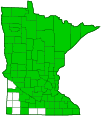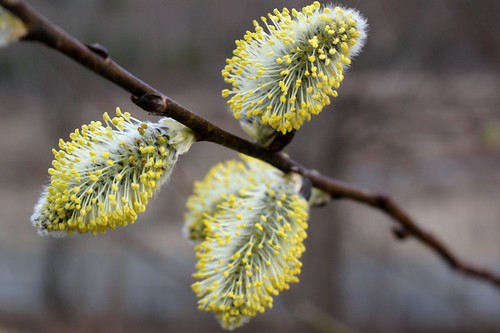pussy willow
(Salix discolor)
Conservation • Wetland • Description • Habitat • Ecology • Use • Distribution • Taxonomy
Description |
Pussy willow is a widely recognized, small, deciduous shrub or shrubby tree rising. When a shrub it rises on many stems, when a tree it rises on a few trunks. It often forms clumps. In Minnesota mature trees are usually 10′ to 20′ tall and up to 12″ in diameter at breast height, though individuals can reach 27′ in height. They typically live 20 to 50 years. The crown is open and rounded. The branches are alternate. The bark on young trees is grayish-brown, tinged with red, and smooth. On mature trees the bark is thin, light brown to gray, shallowly fissured, and scaly. The twigs are stout, shiny, and dark reddish-brown, with scattered orange dots (lenticels). When young they are hairy, becoming hairless as they age. The buds are reddish-purple, shiny, egg-shaped, flattened, and taper to a long point. They are covered with a single cap-like scale. The vegetative buds are about ¼″ long, the flower buds are about ⅜″ long. The leaves are alternate, oblong to narrowly elliptic, firm, 2″ to 5″ long, and ½″ to 1½″ wide. They are usually less than 5½ times as long as wide. The blade tapers at the base to a ⅜″ to 1″ long leaf stalk, and may be either blunt or pointed at the tip. There is often a pair of small, leaf-like appendages (stipules) at the base of the leaf stalk. On vigorous shoots, the stipules can be up to 5⁄16″ (8 mm) long, but they are more often minute. Young leaves are reddish and hairy. The upper surface of mature leaves is bright green, shiny, and hairless, with raised veins. The underside is whitish and hairless or sparsely hairy. The margin is untoothed or has shallow, irregular teeth, especially above the middle. In the fall the leaves turn yellow. Male and female flowers are separate trees. Both flowers are cylindrical catkins on a short stalk with tiny, leaf-like bracts at the base of the stalk. When immature they are densely covered with silky hairs. They are fully developed before the leaves appear. The female catkin is ½″ to 1⅛″ long and greenish with dark brown scales. The male catkin is ¾″ to 1½″ long, fuzzy, silvery or white with dark brown scales, and has 2 stamens with yellow anthers. The flowers are pollinated by wind. The fruit is a small, brown, densely hairy, cylindrical, ¼″ to ½″ long, long-beaked capsule, containing many seeds. The capsules are attached to 2⅜″ to 3⅛″ long seed catkins. |
Height |
10′ to 20′ |
Flower Color |
|
Similar Species |
Bebb’s willow (Salix bebbiana) buds are blunt. The leaf upper surface is dull green and wrinkled, not shiny and smooth. The lower surface has whitish hairs and prominent, meshing veins. The margins are somewhat rolled under. |
Habitat |
Wet. Swamps, wet meadows. |
Ecology |
Flowering |
May to June |
Pests and Diseases |
|
Use |
|
Distribution |
||
|
Sources |
|
| 7/9/2024 | ||
Nativity |
||
Native |
||
Occurrence |
||
Common |
||
Taxonomy |
|
Kingdom |
|
Subkingdom |
Pteridobiotina |
Phylum |
Tracheophyta (Vascular Plants) |
Class |
|
Order |
Malpighiales (Nances, Willows, and Allies) |
Family |
Salicaceae (Willow) |
Subfamily |
Salicoideae |
Tribe |
Saliceae |
Genus |
Salix (Willows) |
Subgenus |
Vetrix (sallows and osiers) |
Section |
Cinerella |
Subordinate Taxa |
|
|
|
Synonyms |
|
Salix ancorifera Salix conformis Salix crassa Salix discolor var. overi Salix discolor var. prinoides Salix discolor var. rigidior Salix fuscata Salix prinoides Salix sensitiva Salix squamata |
|
Common Names |
|
large pussy willow pussy willow pussy-willow |
|
Glossary
Beak
A comparatively short and stout, narrow or prolonged tip on a thickened organ, as on some fruits and seeds.
Catkin
A slim, cylindrical, drooping cluster of many flowers. The flowers have no petals and are either male or female but not both.
Lenticel
A corky, round or stripe-like, usually raised, pore-like opening in bark that allows for gas exchange.
Stipule
A small, leaf-like, scale-like, glandular, or rarely spiny appendage found at the base of a leaf stalk, usually occurring in pairs and usually dropping soon.
Visitor Photos |
||
Share your photo of this plant. |
||
This button not working for you? |
||
Luciearl |
||
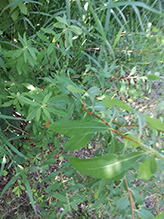 |
||
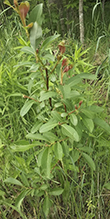 |
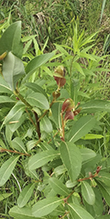 |
|
MinnesotaSeasons.com Photos |
||
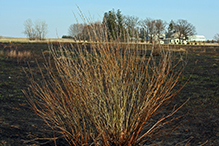 |
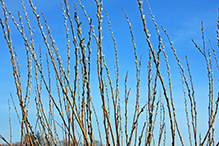 |
|
Plant |
||
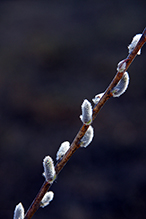 |
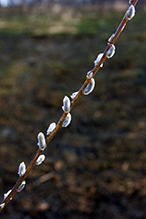 |
|
Inflorescence |
||
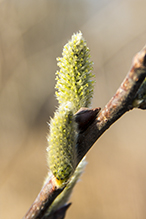 |
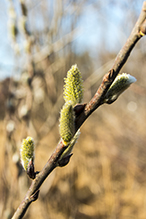 |
|
Female catkins |
||
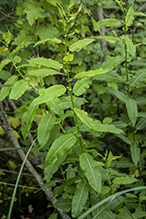 |
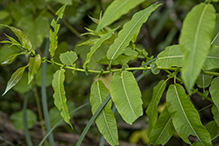 |
|
Leaves |
||
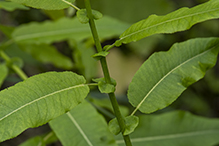 |
||
Persistent large stipules |
||

Visitor Videos |
||
Share your video of this plant. |
||
This button not working for you? |
||
|
Other Videos |
||
Pussy Willows in March with John Latimer |
About
Uploaded on Mar 23, 2010 Did you know there are 18 different species of willow shrubs in MN? Did you know a pussy willow is male OR female? Did you know they come in a variety of colors? Did you know you can make willow whistles? Here's the latest in our continuing series Phenology Videos with John Latimer, this time on Pussy Willow: |

Visitor Sightings |
||
Report a sighting of this plant. |
||
This button not working for you? |
||
| Luciearl 7/6/2024 |
Location: Lake Shore, MN |
 |
| Luciearl June 2023 |
Location: Lake Shore |
 |
MinnesotaSeasons.com Sightings |
||
Avon Hills Forest SNA, North Unit Clifton E. French Regional Park Margherita Preserve-Audubon Prairie Minnesota Valley State Recreation Area, Lawrence Unit Northern Tallgrass Prairie NWR, Hoffman Unit Northern Tallgrass Prairie NWR, Rengstorf Unit Northern Tallgrass Prairie NWR, Spieker Unit Robert Ney Memorial Park Reserve Sand Prairie Wildlife Management and Environmental Education Area |

|
Created: Last Updated: © MinnesotaSeasons.com. All rights reserved. |
